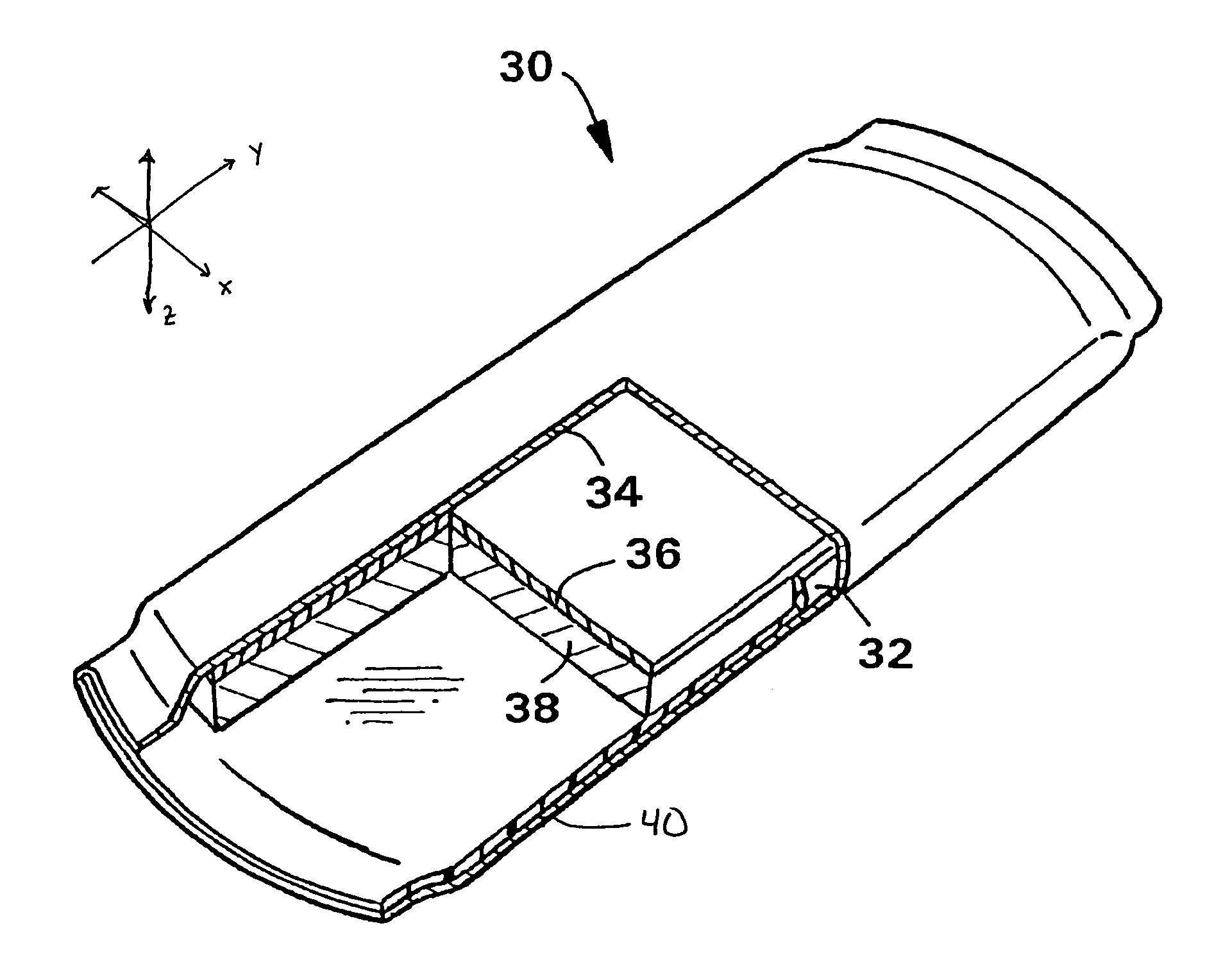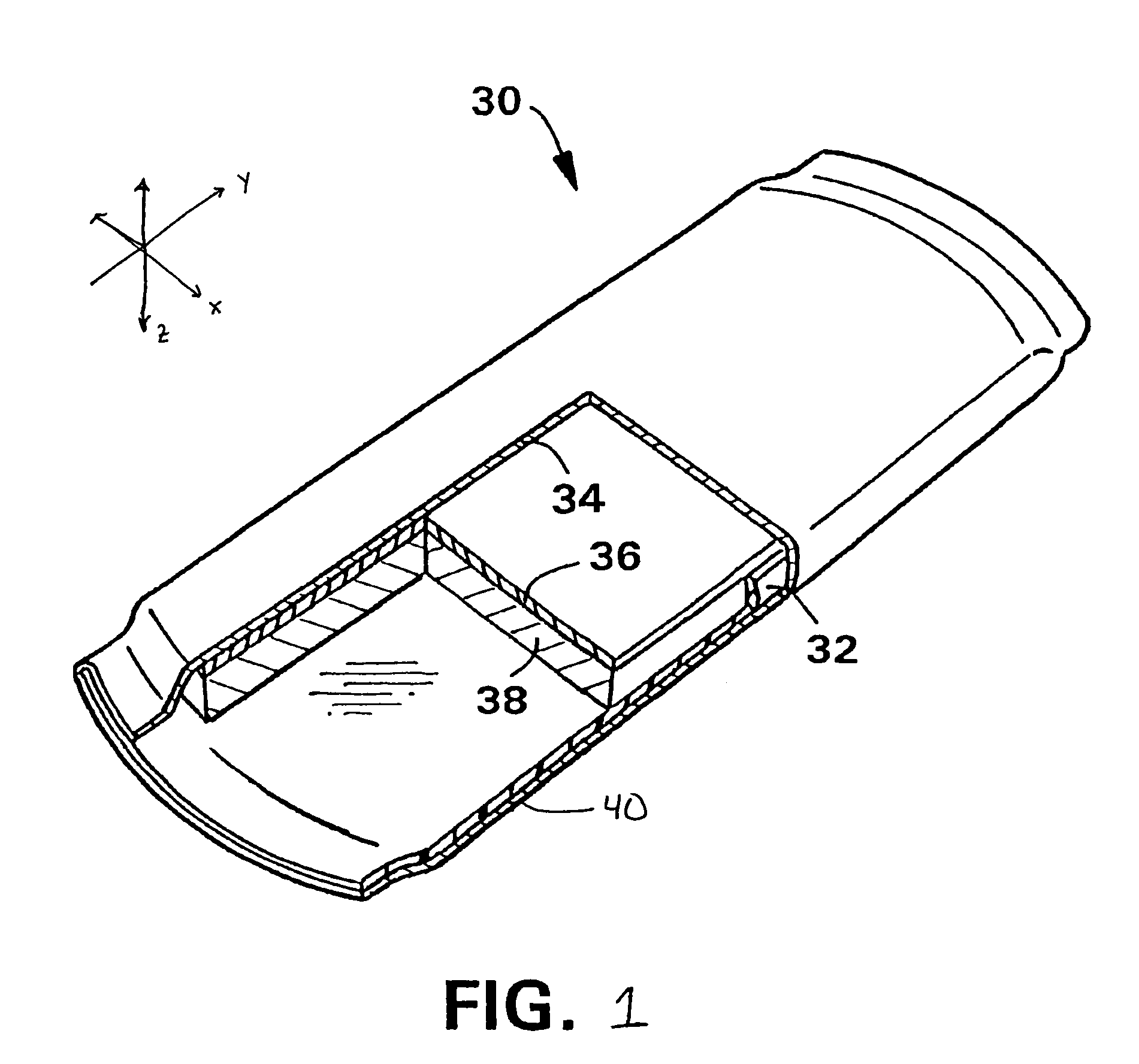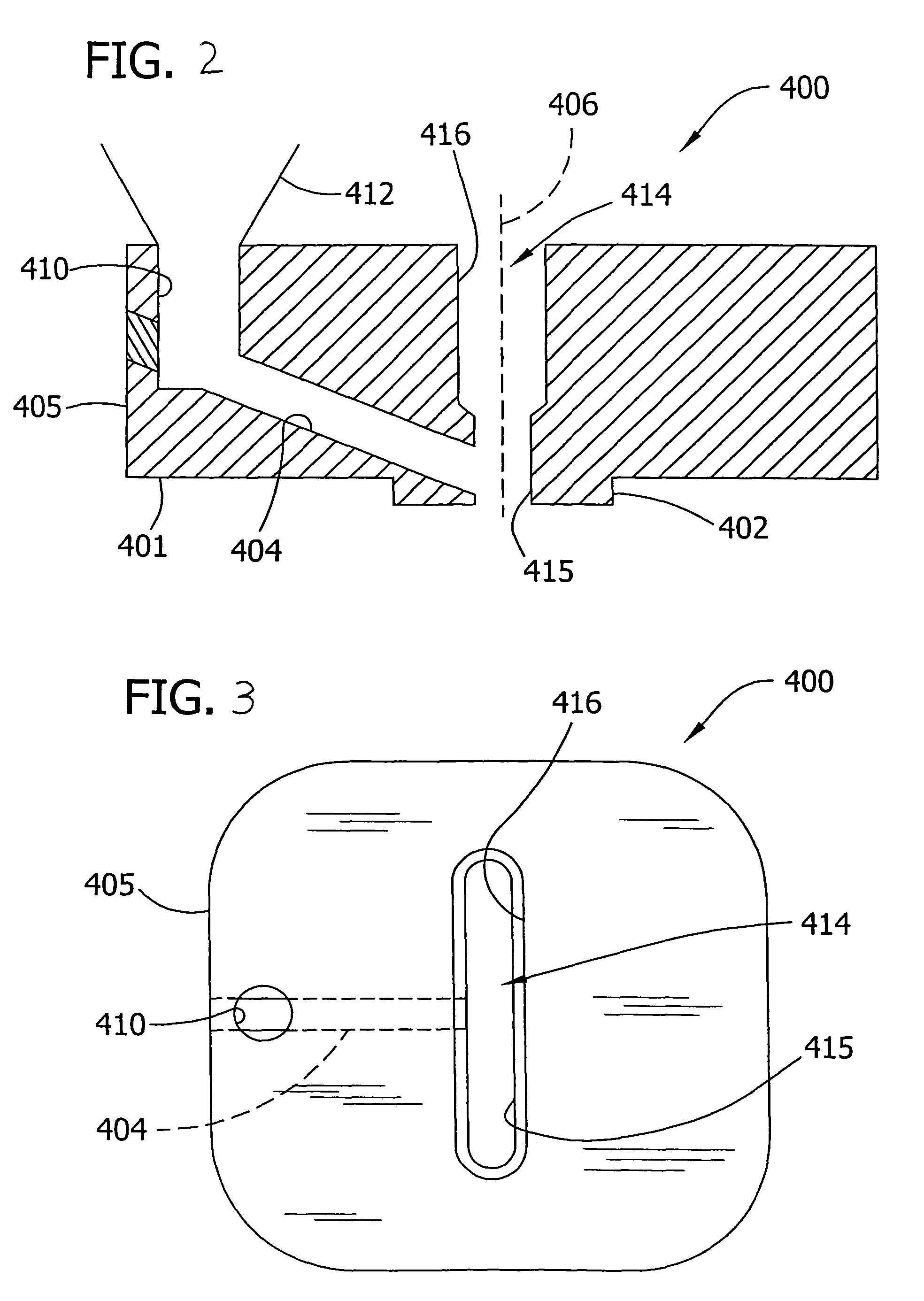Absorbent products with a linked enzyme treatment
a technology of enzyme treatment and absorbent products, which is applied in the field of treated substrates and absorbent articles, can solve the problems of difficult to provide an absorbent material which will efficiently absorb a wide variety of fluids, difficult to absorb and distribute within feminine hygiene products, and high viscoelastic fluids are often difficult to absorb into absorbent products. achieve the effect of increasing the absorbency of viscoelastic fluids
- Summary
- Abstract
- Description
- Claims
- Application Information
AI Technical Summary
Benefits of technology
Problems solved by technology
Method used
Image
Examples
example 1
[0081]A rheological test was used to demonstrate the performance of the composition of the invention. The testing was carried out using a Vilastic III capillary rheometer equipped with a 1 millimeter diameter capillary tube, available from Vilastic Scientific, P.O. Box 160261, Austin, Tex. 78716. The instrument was set up to take 10 time course measurements of a fluid's viscoelasticity in logarithmic increments. These measurements were taken at a single frequency of 0.5 Hz and shear rate of 1 to 10 s−1. The directions provided with the rheometer were followed.
[0082]In this example, a linked enzyme is placed directly into the menses simulant. To use the simulant, the simulant is first warmed for 10 minutes at 22° C. in a water bath. The simulant is then manually mixed while in the transfer pack for about 4 minutes and until no visual separation is seen. The amount needed for testing is placed in a beaker and stirred at the lowest setting for 1 minute.
[0083]The results are shown in Ta...
example 2
[0085]In this example, the intake time of the simulant is measured. As in Example 1, the simulant is warmed using the procedure of Example 1 before use. A nonwoven web prepared by an air laying process containing 85% pulp and 15% binder fibers, was formed. The nonwoven web had a density of 0.6 g / cc and a basis weight of 175 gsm, and was cut into 4 inch by 4 inch samples. The control was untreated and the sample within the present invention were sprayed evenly across the surface of the sample with a solution containing water and papain linked to polyacrylic acid available as LINKED PAPAIN® from Collaborative Laboratories, and allowed to air dry for a period of time. Each sample within the present invention had about a 10% by weight of linked papain add-on. The intake rate for both the treated and untreated sample was measured using the intake test method described above. First, second and third insults were used in this example. The time needed for each insult to be absorbed by the n...
PUM
| Property | Measurement | Unit |
|---|---|---|
| molecular weights | aaaaa | aaaaa |
| diameters | aaaaa | aaaaa |
| diameters | aaaaa | aaaaa |
Abstract
Description
Claims
Application Information
 Login to View More
Login to View More - R&D
- Intellectual Property
- Life Sciences
- Materials
- Tech Scout
- Unparalleled Data Quality
- Higher Quality Content
- 60% Fewer Hallucinations
Browse by: Latest US Patents, China's latest patents, Technical Efficacy Thesaurus, Application Domain, Technology Topic, Popular Technical Reports.
© 2025 PatSnap. All rights reserved.Legal|Privacy policy|Modern Slavery Act Transparency Statement|Sitemap|About US| Contact US: help@patsnap.com



